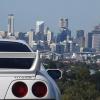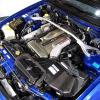Sway Bar Rate Vs Spring Rate
Announcements
-
Similar Content
-
Latest Posts
-
Starting with issues 1 - 5, we have already run into a problem...! Issue #4 contained 2x front brake calipers, instead of 1 caliper and 1x steering knuckle. Will have to call DeAgostini on Monday to sort it out. Anyway here's some photos. Issue #1 is the front bumper, headlights and number plate. Issue #2 is the front wheel (with "We produced with spartan air." text on the centre cap!) and tyre, the front lip spoiler and cylinder head cover with ignition coils under the centre cover... which will never be seen again. Issue #3 is the bonnet and cylinder head. Issue #4 is the front strut, brake disc (with laser etched metal discs) and brake caliper. I stopped here because of the issue with the missing steering knuckle. Next update will be #5 - #10 in a few weeks.
-
DeAgostini is one of a few companies that release quite large (the largest commonly available size actually) 1/8 scale models in a series of weekly issues over 100 - 110 instalments. They release different models for different markets and DeAgostini Japan have release the BNR32 Skyline GT-R Nismo last month. I've made two of these 1/8 scale sized cars (one an R35 GT-R from 2012 - 2014, the other I'm just about halfway through, a BNR34 Skyline GT-R from the 2Fast 2Furious movie) so when this R32 was announced there was no way I could ignore it as it's my favourite out of all Nissans. Each issue costs around $20 so it costs about $2.2K when completed. I suppose it is very expensive for what it is, but the quality and details are really very good, and there are many "gimmicks" like fully functioning exterior and interior lights operated with a remote control, working steering, all doors/bonnet/boot/fuel lid open and close, the side mirrors fold in and it even has a speaker for the engine revving sounds when you turn the lights on. Each issue comes with a magazine that tells the story of the BNR32 Skyline GT-R Nismo from the first design stages of the BNR32 to Group A homologation and the various racing version that were run in the Japanese Group A and JGTC, and Australian Group A. So I plan to update the build in this thread 5 issues at a time. https://deagostini.jp/r32/?srsltid=AfmBOooKjxDc4EUK2rmXqMBPgyHfFJ24s4oEPJBNpnF-lFlsRoW0PE6P
-
As per title.. has anyone used so far? Keen to hear results, comparisons. In the market for a new mani for my new turbo. Any issues cracking?
-
Re read everything that has been written about this in this thread.. Let us know if you're still confused.
-
By joshuaho96 · Posted
This would be a new pump with new gears. I'm just unclear on whether it's a good idea to run more oil pump flow if you don't actually need said flow. Oil level is set a minute or so after shutting off a warm engine so wouldn't the high RPM oil level in the sump end up lower all things equal? Plan is OEM clearances, main concern in my mind is whether the OEM pump can keep up with the flow requirements of any additional oil coolers.
-





Recommended Posts
Create an account or sign in to comment
You need to be a member in order to leave a comment
Create an account
Sign up for a new account in our community. It's easy!
Register a new accountSign in
Already have an account? Sign in here.
Sign In Now